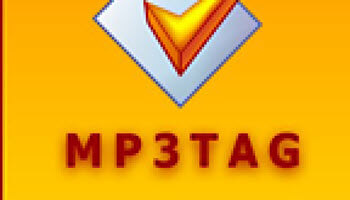MP3 Batch Editing
You finally got around to ripping your personally owned CDs to make .mp3 or similar files that can be played on your PC or Phone. You might have noticed that there are times when a file fails to capture all the information known as metadata, which can result in an “unknown artist or author” or include the album art. Other problems, like mismatched titles and tracks, can be out of sync.
What Is Metadata?
Metadata from a standard CD song can be quite expansive. It includes data like:
- Song Title
- Artist name
- Album Title
- Track Number
- Genre
- Ownership
- Songwriters
- Publishers
- Copyright info
- Lyrics
- Cover Art
It would be difficult for your music player to organize your music by genre if the genre was not included in the metadata. The same for sorting by Artist or Album.
Unfortunately, many different variations of music albums are created. Releases in the UK, USA, Europe, and Asia might include different bonus tracks as well as album covers. An album like Taylor Swift’s Fearless has 101 variations.
So how can you be certain that the music player doesn’t show “Unknown Artist” or a blank or wrong Album Cover. One surefire way of knowing is to use the MP3tag software.
Mp3Tag To The Rescue
Free for Windows and $24.99 for macOS Mp3Tag is a user-friendly tool used for editing metadata on your media files. Mp3Tag is not the only program that can help organize your metadata, “Musicbrainz Picard” is another excellent program that offers a slightly different approach to organizing data. Picard is the actual name of the software and “MusicBrainz” is the database that contains the data. Mp3Tag uses both Discogs and MusicBrainz databases.
How It Works
Once installed on your PC, you only have to right-click on a music album in File Explorer and select Mp3tag.
This will open the Mp3tag screen listing all the songs in the album with accompanying tags like song title, artist, year, and genre as examples. If all the tags are present and correct for each song and you see the cover art in the lower left, you are good to go. This is usually the case. However,:
- If Filenames fail to match the Title or Track# you can click on the field and enter the correct information.
- If you see missing data shown as “Unknown”, click and enter the correct information.
- The same goes for missing information.
- If entire columns are missing data like Genre or Artist, etc. Use the left panel of the program and enter the data. Once you click on the data the entire row(s) will change.
If several of the songs have missing or mismatched metadata, Select the entire song list and use the Tag Sources option to find the album in one of two online databases. Discogs + Album or MusicBrainz. Note: If you are missing only the Album Art, select Cover Art, then the database of choice. Once you correctly select the album that matches yours it will bring up a screen showing you the correct information in the left panel and your tag information in the right panel.
If you see unmatched titles, select the correct one in the right panel and move it up or down to have both panels match, then click on OK.
Once you select the album that matches yours, it will bring up a screen showing you the correct information in the left panel and your tag information in the right panel. If you see unmatched titles, select the correct one in the right panel and move it up or down to have both panels match. Click OK and the song metadata should be correct.
Some album titles might include things like [Disk1], [Deluxe]. (see image above) This usually happens with sets and compilations. You will get an error message as shown below. If a message like the image below appears, remove the [Disk 1] and submit it again.
Discogs vs MusicBrainz
I feel that MusicBrainz gives you a better chance of finding the correct album because it lists each album with a probability score that can help narrow down your search.
Discogs on the other hand is much better at finding the album art associated with your album. If the only data missing is the Album cover the best way to locate it is by using the Cover Art option and choosing Discogs Artist + Album. This will only search for the artwork and not try to match your song list.
Summary
I have a large database of music with as many as 12,000 songs. Before fixing my metadata most players looked like this:
Having all the correct metadata helps sort my music by artist and or genre. Each music player handles tags differently so try a few out. I find that creating defined multiple Playlists containing only a few hundred songs and pointing the player to that playlist makes it easier to organize my most often played music. My next article will review my favorite Music Player.
—


I’ve been using Mp3Tag on and off for years. People have made custom sources you can use for searching different databases and handy for bulk editing.
Great little freebie